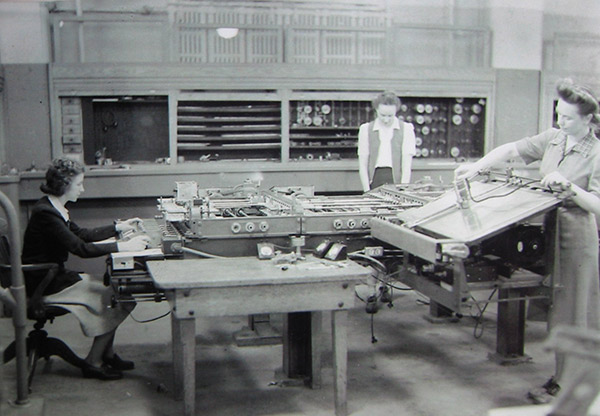Three EPIC exhibitions
Published in 18th-19th Century Social Perspectives, 20th Century Social Perspectives, Emmigration, Issue 6 (November/December 2018), News, Volume 26EPIC, the Irish Emigration Museum, collaborates with the Department of Foreign Affairs and Trade to showcase the global Irish diaspora.
By Angela Byrne
In 2018–19 EPIC is working together with the Department of Foreign Affairs and Trade (DFAT) to celebrate global Irish emigration through the centuries, and to enhance connections with the Irish diaspora today, through three travelling exhibitions. The exhibitions will be launched in EPIC before going on to tour Irish embassies around the world. The chosen themes are trail-blazing Irish women, the Irish at sea and education, highlighting areas in which the Irish have made a significant international impact throughout our long history of emigration.
‘Blazing a Trail’ is the first of the three exhibitions and is designed in collaboration with Herstory. The exhibition will be on display in EPIC on 12–25 November to mark the centenary of the Parliament (Qualification of Women) Act on 21 November, which allowed women to run for parliament for the first time and resulted in the election of Constance Markievicz to Westminster (as a Sinn Féin candidate, she abstained in favour of sitting in the first Dáil). In February 1918, 8.4 million British and Irish women aged 30 and over were partially enfranchised (subject to property conditions).
From its inception, the movement for sexual equality was a global one. It was fought not only by suffrage campaigners but also by individual pioneering women who, on their own terms, defied convention and resisted social expectations to blaze a trail for those who came afterwards. This exhibition tells the stories of Irish women all over the world who made long-lasting contributions in the fields of politics, sport, science and medicine, culture and the arts, and humanitarian work. These include the Donegal-born pioneering computer programmer Kay McNulty; Mabel Cahill, the only Irish person to ever win the US Open; and Monaghan’s Mary Lee, who became one of Australia’s leading suffrage campaigners.

Above: Donegal-born Kay McNulty, Alyse Snyder and Sis Stump operate the differential analyser (a mechanical analogue computer that made calculations using physical wheel-and-disc mechanisms) in the basement of the Moore School of Electrical Engineering, University of Pennsylvania, c. 1942–5.
The second exhibition, on the theme of ‘The Irish at Sea’, will be launched in EPIC in March 2019. The sea is a key theme in Irish history. It has provided employment and resources, influenced folklore, and offered obvious but crucial links with the wider world. Ireland’s long coastline presented a threat to British security at key moments like the Spanish Armada and the Napoleonic Wars. Hundreds of Irish people joined the Royal Navy and the Merchant Navy in search of work or adventure, engaging in imperial wars and voyages of exploration, while others helped to establish navies elsewhere, such as in Russia and Argentina. More recently, since 2015, the Irish Naval Service has participated in humanitarian operations in the Mediterranean Sea. Mercantile and trading links were also crucial. Five hundred years ago, Irish fishermen crossed the Atlantic to reach Newfoundland’s cod banks. Entrepreneurial Irish merchants profited from Mediterranean trade links from the medieval period, exchanging wine, salt and hides. In 1858 the transatlantic cable, stretching from Valentia to Newfoundland, cut communication time from ten days to just minutes. The sea provided opportunity and possibility but was also a site of tragedy. ‘Coffin ships’ have come to occupy a central place in the popular image of the Famine years, but over 7,600 Irish babies started their lives aboard those same ships. This exhibition will explore Ireland’s maritime history by highlighting global Irish stories of adventure, tragedy and opportunity.
The third exhibition highlights Ireland’s long history of exporting men and women educators to work with communities all over the world—a tradition that continues today. While in the early modern period people left Ireland to access Catholic education on the Continent, from the nineteenth century Irish laypeople and religious orders became synonymous with schooling across the world. Education in Ireland itself was revolutionised with the establishment of the National Schools system in 1831, the development of convent schools, the 1878 Intermediate Education Act granting women access to all examinations of the Intermediate Board, and the compulsory education of all children aged 6–14 from 1892 onwards. While many children continued to fall through the cracks, there was a notable increase in girls’ educational attainment from 1870 onwards, creating a new generation of educated and ambitious women. The combination of these factors led many Irish women to train as educators. They found opportunities for adventure and fulfilment in the British imperial service and in missionary work. For example, Julia McGroarty established schools for African-American and immigrant children in nineteenth-century Philadelphia, and founded Trinity women’s college in 1900; Margaret Noble (Sister Nivedita) dedicated herself to the education and empowerment of Indian women; and Frances Power Cobbe campaigned for women’s access to second- and third-level education in the UK. It is planned to launch this exhibition in EPIC in May 2019.
Angela Byrne is DFAT Historian-in-Residence at EPIC, the Irish Emigration Museum.
















